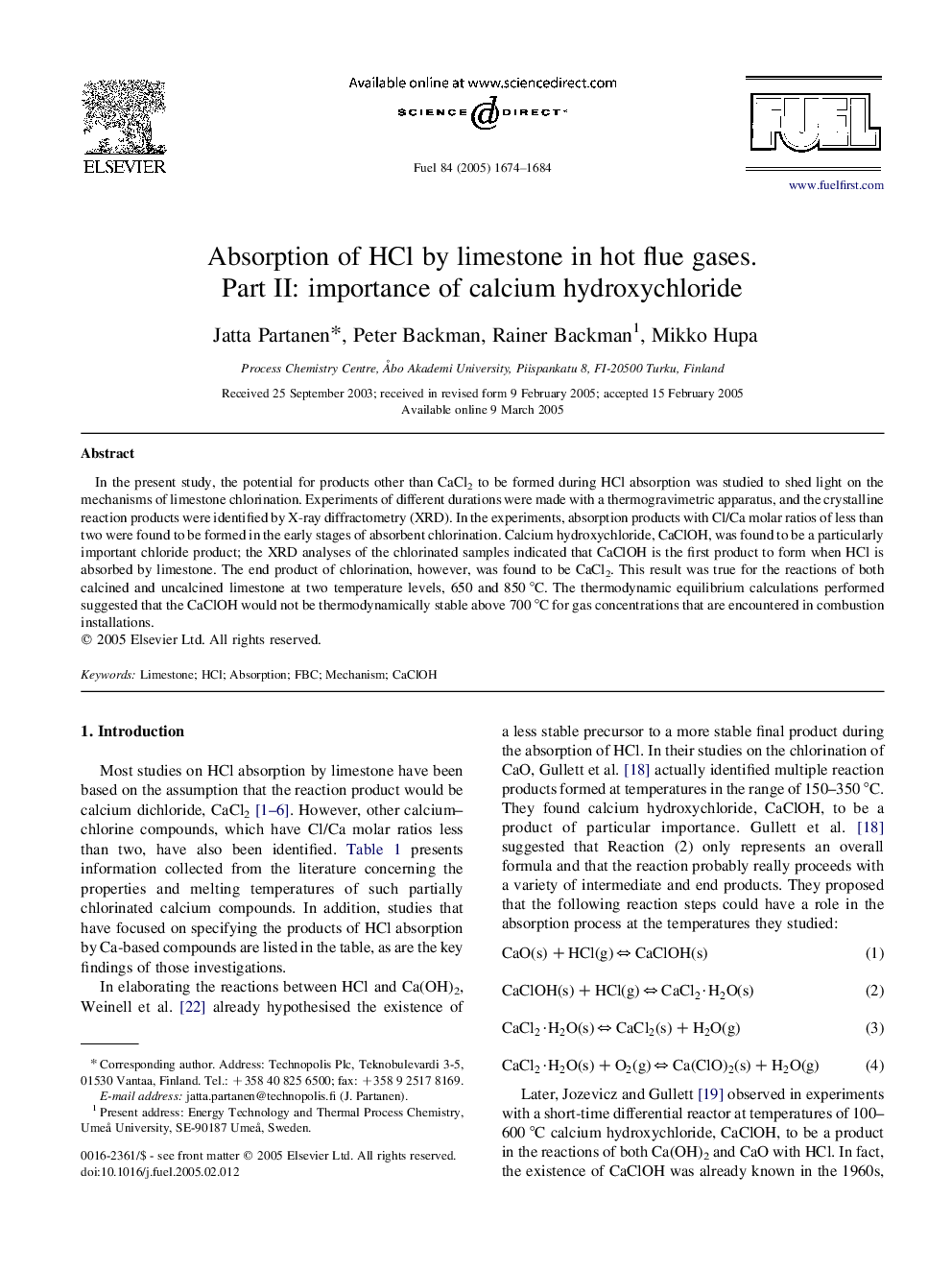| Article ID | Journal | Published Year | Pages | File Type |
|---|---|---|---|---|
| 9629134 | Fuel | 2005 | 11 Pages |
Abstract
In the present study, the potential for products other than CaCl2 to be formed during HCl absorption was studied to shed light on the mechanisms of limestone chlorination. Experiments of different durations were made with a thermogravimetric apparatus, and the crystalline reaction products were identified by X-ray diffractometry (XRD). In the experiments, absorption products with Cl/Ca molar ratios of less than two were found to be formed in the early stages of absorbent chlorination. Calcium hydroxychloride, CaClOH, was found to be a particularly important chloride product; the XRD analyses of the chlorinated samples indicated that CaClOH is the first product to form when HCl is absorbed by limestone. The end product of chlorination, however, was found to be CaCl2. This result was true for the reactions of both calcined and uncalcined limestone at two temperature levels, 650 and 850 °C. The thermodynamic equilibrium calculations performed suggested that the CaClOH would not be thermodynamically stable above 700 °C for gas concentrations that are encountered in combustion installations.
Keywords
Related Topics
Physical Sciences and Engineering
Chemical Engineering
Chemical Engineering (General)
Authors
Jatta Partanen, Peter Backman, Rainer Backman, Mikko Hupa,
